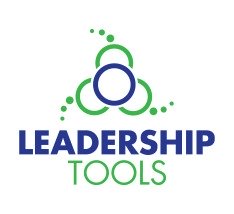Conflict-Tools
Use this online-leadership-tool to assess where your team is at in the conflict cycle and how to proceed wisely. This is a valuable conflict-tool for "diagnosis before treatment."

Donna Rae Scheffert, author, is President of Leadership Tools, a consulting firm, and a retired Leadership Development Specialist from the University of Minnesota Extension. She spent over 20 years creating leadership information, tools and training. She is the owner of online-leadership-tools.com
Conflict-Tools for Identifying Concerns
Use this online-leadership-tool to assess where your team is at in the conflict cycle and how to proceed wisely. This conflict-tool can be used when concerns arise or on an occasional basis.
What are the typical points of conflict on boards?
Use this conflict-tool to discover differences among board members in:
• Personal and communication styles
• Vision for the organization
• Personal expectations of the organization
• Levels of participation in board work
• Understanding of board member roles
• Amount of loyalty to the executive and the organization
Areas of authority and responsibility divided between the executive and the board:
• Means of accountability for executive to board
• Degree of autonomy available to the executive in decision making and action
• Amount of information board needs to feel informed and do its work
• Level of policy making in which board engages
• Level of financial responsibility board undertakes to keep the organization solvent

Where is your team in the cycle?
Conflict tends to follow a cycle. Use this conflict tool to find out where your team is in the five part cycle. Jerry Robinson identifies five common stages.
1.Tension Development
As the disagreement or threat begins to develop, the various parties start taking sides. The differences can appear immediately or overtime.
2. Role Dilemma
People or groups who are involved raise questions about what is happening, who is right, what should be done. They try to decide if they should take sides, and, if so, which one. (Tension Development and Role Dilemma often happen at the same time.)
3. Injustice Collecting
Each party begins to gather support. Each itemizes the problems, justifies their position, and thinks of revenge or ways to win.
4. Confrontation
The parties meet head on and clash. If both parties hold fast to their side, the showdown may cause permanent barriers. Confrontation may be lessened or avoided by one or both parties making adjustments.
5. Adjustments
If one party is weak and the other strong, the strong party can win by "domination", but the core differences may reappear. If parties have equal power, and neither party decides to change, they can wage a "cold war", each party trying to weaken the other. One party may choose to "avoid" the other. The two parties may choose to "compromise", each gaining a little and losing a little. The two parties can "collaborate" in an active participation which looks for a solution that takes care of both parties' needs.
In fact, in our society only compromise/collaboration resolves the problems over time. Other adjustments are, at best, short-term solutions. If domination, cold war, or isolation is chosen, the cycle can be ongoing.

What are the results of successful resolution?
Use this conflict-tool to assess the results of the conflict resolution.
Unsuccessful
People feel defeated and humiliated.
The distance between the parties increases.
A climate of distrust develops.
Cooperation may decrease.
People are forced to clarify their views.
Resistance develops when team work is needed.
Some people leave because of the turmoil.
Successful
Better ideas are produced.
People are forced to search for new approaches.
Long-standing problems surface and are addressed.
Tension stimulates interest and creativity.
People have a chance to test their capabilities.
What are the courses of action?
Flight – avoiding it
(Also called non-confrontational: to avoid or elude the issue)
• BATNA – best alternative to a negotiated agreement. One or both of the parties experiencing the conflict understands the consequences of not reaching an agreement to resolve a conflict and is clear about the alternative.
• Subtle – at least one party refuses to acknowledge the conflict. It is common for the person who doesn’t acknowledge the conflict to describe the party that does as oversensitive, imagining things or paranoid. Until the other party acknowledges the conflict it is unproductive to try to resolve the conflict.
• Exit – at least one party intentionally leaves the situation to avoid the conflict. The exit might appear to be swift or slow, but it is an intentional retreat from the situation.

Fight – challenging it
(Also called control – to deal with it by arguing or using nonverbal messages to emphasize demands)
• Conversion – is about bringing over from one belief, view or party to another. Literally, it is to turn together. Conversion recognizes no position but its own. Therefore, the fight is to convert another person to one’s own views.
• Confrontation – the parties meet head on and clash. If both parties hold fast to their side, the showdown may cause permanent barriers.
• Domination – if one party is weak and the other strong, the strong party can win by “domination”, but the differences are likely to reappear.
• Cold War – if parties have equal power, and neither party decides to change, they can wage a “cold war”, each party trying to weaken the other.
Engagement – bringing others in working to manage it
(Also called solution-oriented: to resolve it by solving the problem)
• Compromise – each party may gain a little and lose a little but reach a settlement.
• Management – recognizes that the controversy is about managing the legitimate differences people have. The differences people normally experience with any issue will not go away. They will be redefined-restructured-and new approaches will result from working to openly and fairly manage them.
• Third Party Intervention – when people have deep differences, it is often wise to bring in a third party mediator to help them move toward resolution. The mediator is someone neutral and external to all parties. Mediators are highly skilled in identifying, analyzing, educating, conducting processes and getting an agreement.

Leadership Tools
Facilitation. Training. Strategic Planning.
Donna Rae Scheffert
809 Mayflower Ct.
Northfield, MN 55057
Let me assist you and your organization. Call me at 612.360.4484
